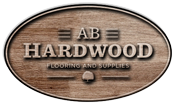Because of the relationship between temperature, moisture and RH, ventilation of a house in the winter tends to dry it out. When you bring cold outside winter air into a house and warm it up, the RH of that air drops significantly. For example, air at 30 degrees Fahrenheit and 50 percent RH when warmed to 70 degrees will be at 10 percent RH. To get the RH of this air back up to something respectable, we would need to add moisture. The more ventilation that is occurring, the more this dry air is drying out your customer’s house, and the more moisture she needs to add. The solution to this part of winter drying is to reduce ventilation. Ventilation of a house is measured in air changes per hour (ACH). As an example, a house that is 1,800 square feet with 8-foot ceilings has a volume of 14,400 cubic feet (1,800 x 8 = 14,400). Changing all the air in this house with fresh air once an hour would be one ACH. Current building codes and standards recommend home ventilation rates near 1/3 ACH. Not all states enforce these codes or standards. Average homes have ventilation rates near 1 to 2 ACH, while some old, leaky homes are near 7 to 10 ACH. Weatherization and home energy audits typically measure ventilation rates. These programs can also pinpoint leakage sites and direct sealing efforts to reduce excessive ventilation rates. Old windows are often major leakage sites, as are recessed lights and other holes in ceilings and floors.
Polishing Hardwood floors
Engineered flooring is supposed to be more stable than solid wood. From a technical aspect, this should be true. But many engineered flooring manufacturers restrict the use of their products to a certain RH range. Warranties that specify 35 to 55 percent RH or 40 to 60 percent RH as the acceptable range. If the flooring is exposed to conditions outside these ranges, the warranties are void. So using engineered flooring may be an option for reducing winter-time floor issues, but check the manufacturer’s recommendations and warranty. Narrow boards will shrink less than wide boards for a given change in moisture content (MC). A 5-inchwide plank will shrink twice as much as a 2¼-inch-strip. So the size of the gap between 5-inch boards will be twice as big as the gap between 2¼-inch boards. More joints means more places to distribute gapping. Some species are more dimensionally stable than other species. For a given change in MC, a 5-inchwide hickory plank will shrink more than a 5-inch-wide red oak plank. The U.S. Forest Service, and others, publishes dimensional change coefficients for different species. A second solution to excessive winter gapping is to use a species of wood that is more stable (one with a smaller dimensional change coefficient). Along the same line of varying dimensional stability, quartersawn flooring shrinks about half as much as flatsawn flooring for the same amount of moisture change, so quartersawn flooring will have smaller gaps than flatsawn flooring under the same circumstances. Therefore, from a wood standpoint, to have the smallest winter gaps, use quartersawn, narrow boards from a stable species.






